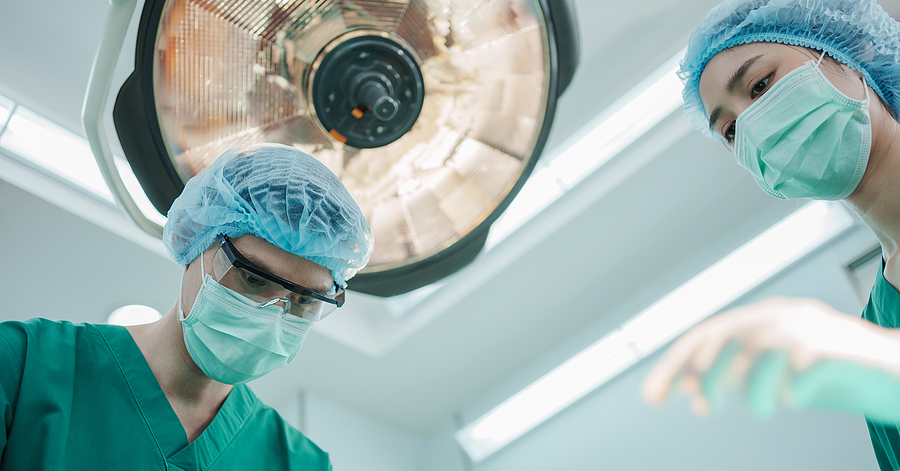A Guide to Dealing with Pain after Hemorrhoid Surgery

Surgery can be painful, and traditional hemorrhoid surgeries are no exception. After this procedure, you may deal with discomfort for several days.
By knowing ahead of time what to expect, you can make a plan for addressing your pain after hemorrhoid surgery. Rest, relaxation and your doctor’s help can make a big difference in how your recovery period goes.
Pain Relievers
Hemorrhoid excision surgery can be quite painful, so you’ll probably need to take medication afterward.
You can discuss the various options with your doctor. The options may include a prescription pain reliever or an over-the-counter variety. Whichever is recommended, be sure to take it according to your doctor’s instructions.
In this video, a doctor provides guidance for taking pain medication after surgery:
In addition to general pain medication, you may also be told to use numbing cream to make bowel movements less uncomfortable.
Cold Packs
Ice can provide relief for a sore bottom after surgery. You can apply an ice pack for 10 to 15 minutes at a time. It's fine to do this repeatedly throughout the day, as long as you take breaks in between each session.
Before applying an ice pack, wrap it in a towel. That will protect your skin.
Warm Baths
Warm water can be comforting. Soaking your rear end in a warm, shallow bath is called taking a sitz bath. Only a few inches of water are needed, and each session takes only about 15 minutes.
If your doctor recommends it, you can do several sitz baths each day. The warm water may be especially soothing after a bowel movement.
After a sitz bath, be sure to pat yourself dry rather than rubbing your skin.
Clothing
Tight, uncomfortable clothing could irritate your surgical site. Opt for loose-fitting loungewear, such as pajama bottoms, instead.
Choose cotton underwear, and make sure it isn’t too tight. Wash it in laundry detergent for sensitive skin since dyes or fragrances could be irritating to your incision area.
Diet
Constipation is a common complaint after hemorrhoid surgery, but it will only make your pain and discomfort worse. A careful diet may help you avoid this issue.
On the day of your surgery, stick to a clear liquid diet. Suggestions include broth and juice. Drink a lot of water too.
The next day, reintroduce solid food. Opt for items that contain a good deal of fiber. Green vegetables and whole grains may be recommended, but ask whether you should eat soft foods for a few days.
Stool Softeners
Your dietary selections alone may not be enough to prevent post-surgical constipation. The doctor may recommend that you take a stool softener as well. That can make bowel movements less painful as your incision site heals.
Sleep
Good rest will help your body recover. It will also benefit your emotional state of mind so that you can better cope with the ups and downs of the post-surgical period.
Prioritize getting enough sleep. Take naps as needed during the day, and turn in at a reasonable bedtime hour.
Find a sleeping position that allows you to rest without placing stress on the surgical site. You might do best on your stomach. Arranging pillows around your body may help you stay in the right position.
If you’re having trouble sleeping, discuss with your doctor whether you need a sleep aid.
Communication with Your Care Provider
Staying in contact with your medical team is an important step in post-surgical pain relief. Some discomfort after a hemorrhoidectomy is to be expected, but severe pain or other extreme symptoms can indicate a problem that requires a doctor's care.
If you’re still in a great deal of pain despite medication, contact your doctor. Also, reach out if your incision site shows signs of infection, such as feeling warm when you touch it. Other reasons to call include a fever over 101.5 degrees F, bleeding that won’t let up, or significant swelling.
Minimally Invasive Treatment
Yes, there are steps you can take to reduce your discomfort after a hemorrhoidectomy. Even still, the thought of being in pain after hemorrhoid surgery is rather unappealing.
It may be enough to keep you from pursuing treatment. Perhaps you’d prefer to keep dealing with your hemorrhoid discomfort instead of facing a new type of pain.
Don’t let your fears keep you from finding hemorrhoid relief. Instead, look into a different method of hemorrhoid removal.
Hemorrhoid banding surgery is a minimally invasive approach to removing hemorrhoids. Instead of cutting out the tissue, a doctor uses a ligation tool, such as the Adler Ligator (AL 9000), to slip a medical-grade rubber band over the hemorrhoid. Within about 10 days, the hemorrhoid dries up and falls off.
Instead of taking weeks to recover, you’ll probably be back to normal in just a few days. During the recovery process, you might have a feeling of fullness in your rectum, but you shouldn’t have full-on pain.
Although this procedure usually offers an easier recovery, it can still be a highly effective method of treating mid-grade hemorrhoid problems.
Facing Hemorrhoid Surgery
Hemorrhoid excision is sometimes necessary, but you’ll need to be prepared for the pain after hemorrhoid surgery. Although medication and rest can help, it may take several days to start feeling like yourself.
As an alternative to a drawn-out recovery period, you could pursue hemorrhoid ligation surgery. It’s a minimally invasive procedure that typically involves less pain and downtime. Learn more about this hemorrhoid treatment by visiting our Adler Ligator page.
As with all medical issues, your physician is the ultimate source as to what procedure best fits your needs. Discuss all options and get a second opinion if you have any doubts. These articles are intended to be a source of general information only.
